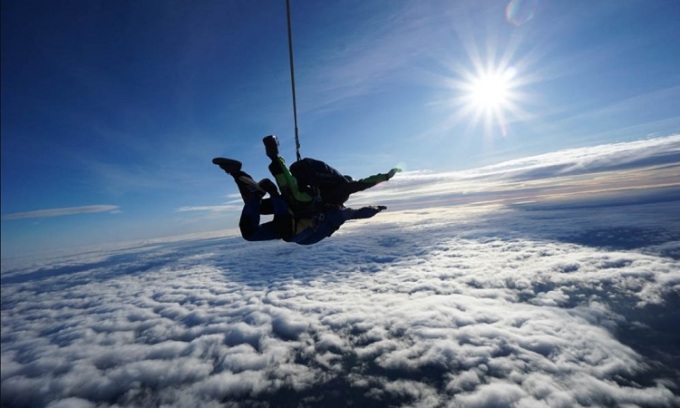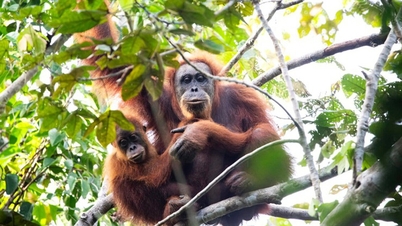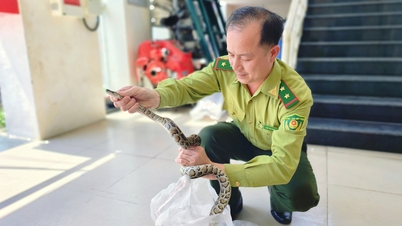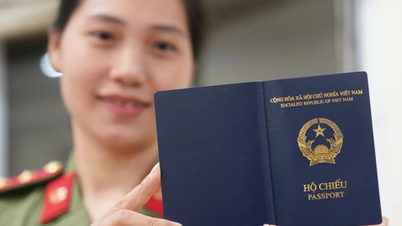You will definitely get cold and wet when skydiving through clouds, no matter what type of clouds they are.

The experience of skydiving through clouds depends on the type of cloud. Photo: Skydive Langar
The experience of falling through a cloud will depend on the type of cloud, your gear, and the weather conditions. But those who have experienced it will generally leave you soaked, cold, and even unconscious.
Clouds form when water molecules condense around airborne particles called aerosols, and the nature of those particles affects the type and size of the cloud. However, according to Marilé Colón Robles, an atmospheric scientist at NASA's Langley Research Center in Virginia who studies clouds, "not all aerosols are created equal."
Some natural aerosols, such as dust, often promote the formation of ice particles, while ocean water vapor contributes to the formation of water molecules. Scientists have also experimented with injecting artificial aerosols into the atmosphere, including silver or lead iodides, to create dense, light-colored clouds that reflect solar radiation or produce rain and snow.
Since skydivers are falling from 4,000 meters, they are most likely to encounter thick stratus and flat-bottomed cumulus clouds. Both are composed primarily of water molecules. When they appear above 1,980 meters, they are called altostratus and altocumulus to mark their location in the atmosphere.
Ryan Katchmar, a Utah-based skydiving instructor who has completed 10,000 jumps, stresses that people shouldn’t try to fall through clouds because there’s no way to monitor potential hazards, including other jumpers or planes. But sometimes they can’t avoid it. “It feels like nothing else. You fall through a white room and then come out at the bottom. If it’s a thick, dark cloud, you’re going to get soaked,” Katchmar says. He likes to feel the air in the area, which is moist but refreshing.
Katchmar has also experienced sudden cold conditions. For this reason, skydivers often cover up to avoid injury from exposed skin. On a recent jump in Utah, while filming another skydiver, Katchmar noticed that the woman’s nose and cheeks had turned white from ice forming around her as she fell through the clouds.
The most extreme situation for skydiving in bad weather involves thunderstorms. Inside a thunderstorm cloud, hot air can rise at speeds of up to 100 mph, but at high altitudes, the particles fall as rain or hail. Additionally, most of the lightning that occurs in thunderstorms occurs within or between the clouds.
Only two people have survived parachuting through thunderclouds. In 1959, American Lieutenant Colonel Henry Rankin bailed out of his fighter plane in rough weather and spent 40 minutes inside the cloud, suffering frostbite and nearly drowning before ejecting more than 100 meters above the ground and crashing into a treetop. Decades later, in 2007, paraglider Ewa Wiśnierska accidentally got caught in a thundercloud while training for the world championships. Wiśnierska lost consciousness due to lack of oxygen and landed several hours later 60 kilometers away.
An Khang (According to Live Science )
Source link



![[Photo] Closing ceremony of the 18th Congress of Hanoi Party Committee](https://vphoto.vietnam.vn/thumb/1200x675/vietnam/resource/IMAGE/2025/10/17/1760704850107_ndo_br_1-jpg.webp)


































![[Photo] Nhan Dan Newspaper launches “Fatherland in the Heart: The Concert Film”](https://vphoto.vietnam.vn/thumb/1200x675/vietnam/resource/IMAGE/2025/10/16/1760622132545_thiet-ke-chua-co-ten-36-png.webp)












































































Comment (0)